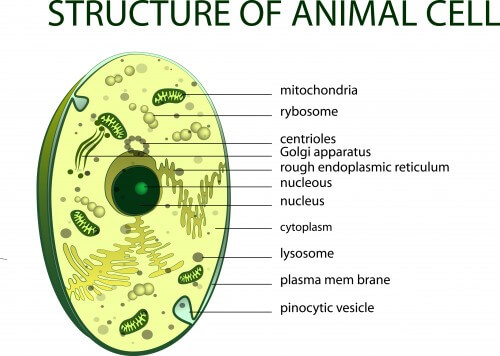Prof. Ohad Medalia from the Faculty of Life Sciences at Ben-Gurion University of the Negev and his colleagues from around the world have developed a new method for thin sectioning and sampling with an ion beam in order to create a good visualization of cell structures.

Prof. Ohad Medalia from the Faculty of Life Sciences at Ben-Gurion University of the Negev and his colleagues from around the world have developed a new method for thin sectioning and sampling with an ion beam in order to create a good visualization of cell structures. The method was recently published in the article "Structural Analysis of Multicellular Organisms with Cryo-Electron Tomography" on the Nature Methods website.
Electron microscope tomography (CET) is a powerful tool in structural biology, which enables the visualization of the three-dimensional structure of biological samples such as cells, organelles or viruses in their natural environment.
To achieve this, the sample is quickly frozen to a temperature of -196oC, and photographed so that it is seen from different directions. With the help of a computer, these series of images are combined to obtain a three-dimensional structure. However, the method is limited to thin samples such as peripheral regions of intact cells. Therefore, applying this method to tissues and multicellular organisms requires physical sectioning of the frozen sample.
In the study, the researchers developed the use of an ion beam to prepare tissues and cells for tomography. Through a combination of freezing a sample directly on an electron microscope substrate and adding nanocrystal markers, which are necessary on the surface, the researchers were able to produce three-dimensional maps of worms (C. elegans) and their fertilized embryos.
that the use of an ion beam, in order to cut samples so that they can be looked at with an electron microscope, has already been reported in the literature, as has the use of worms. The innovation in this research is in the way the biological sample is frozen - freezing without any material that surrounds the sample and makes cutting easier. Another innovation is the use of nanocrystalline markers which allow different and new sections and the creation of a three-dimensional structure simulation in a variety of conditions chosen by the user, thus improving the image resolution.
The method demonstrated in the study offers a general solution for obtaining high-resolution tomograms from thick cells and tissues under varied imaging conditions. CET can now be used to resolve macromolecular structures from tissues, thereby bridging the gap between structural, cellular and developmental biology.

4 תגובות
This is really an important step to make an artificial cell.
Igal,
The great abundance of products that are available to you every day in the grocery store is largely due to scientific research that started just like that, I can easily think of many possible applications of such research in the field of food engineering, keeping food fresh, and the like.
How do I take it to the grocery store?
Well, keep posting articles on the subject. Preferably with more detailed explanations.